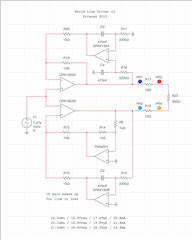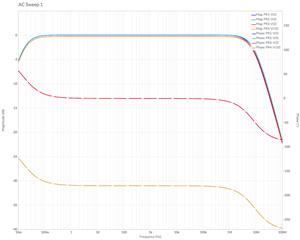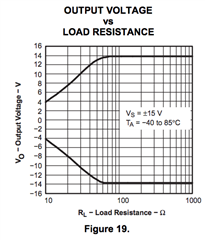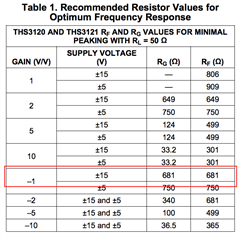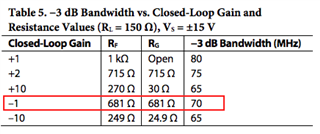What high speed amps can meet the following criteria on a ±15V supply?
ein @ 1kHz ≤3nV/rtHz
-3dB BW of ≥ 50MHz (ideally ≥80MHz) in a gain of –1
20Vpp
...with a 600Ω to 1KΩ Rf and no additional load, at reasonable distortion in the audio band. It's just hitting a voltage follower next, so the only current is its own NFB. The follower has a very low input capacitance, and I can put a small Riso in between.
I'm having a hard time extrapolating this from data sheets because often "large signal" means 2Vpp or 4Vpp, and few are specified at 20Vpp.
THS3091 looks like a good candidate (correct?) but there must be others. THS3491 has a very high Iq. I see some with Iq below 5mA, which would be great. Just trying to understand the options here. I was looking at the THS4031 but I see that its bandwidth shrinks dramatically with large signals.


